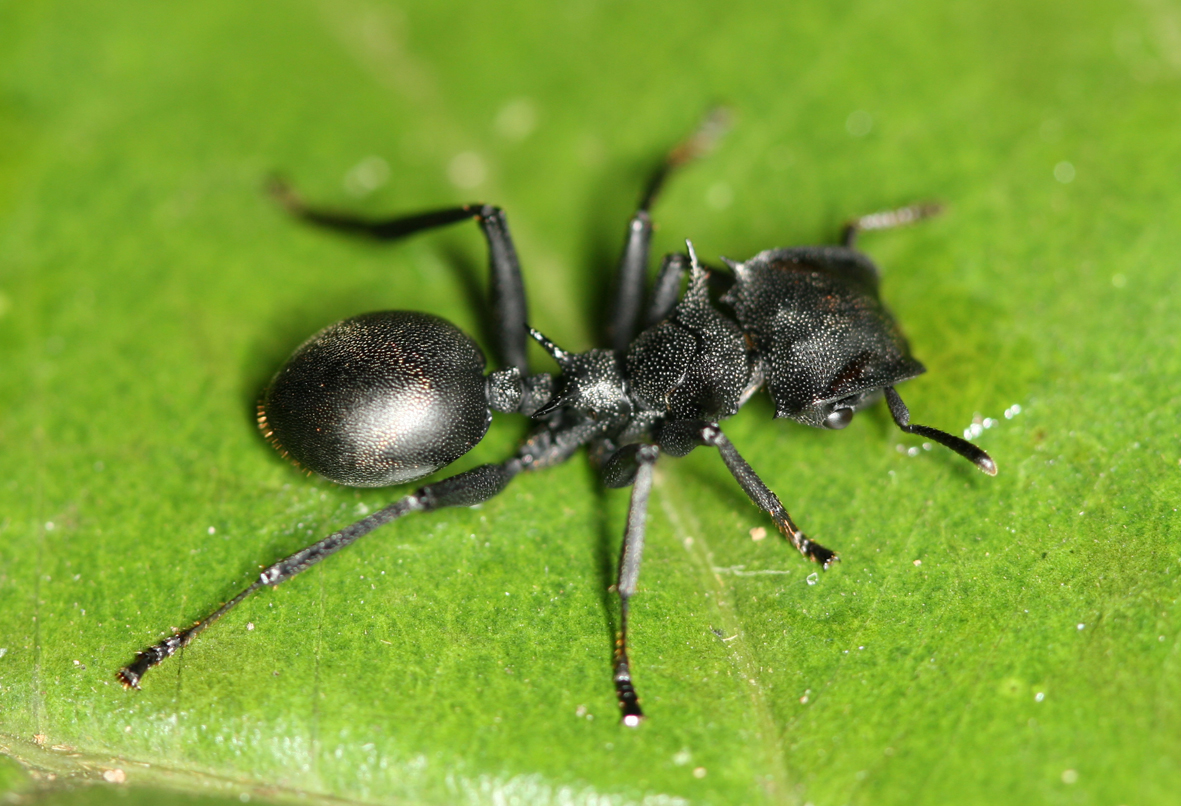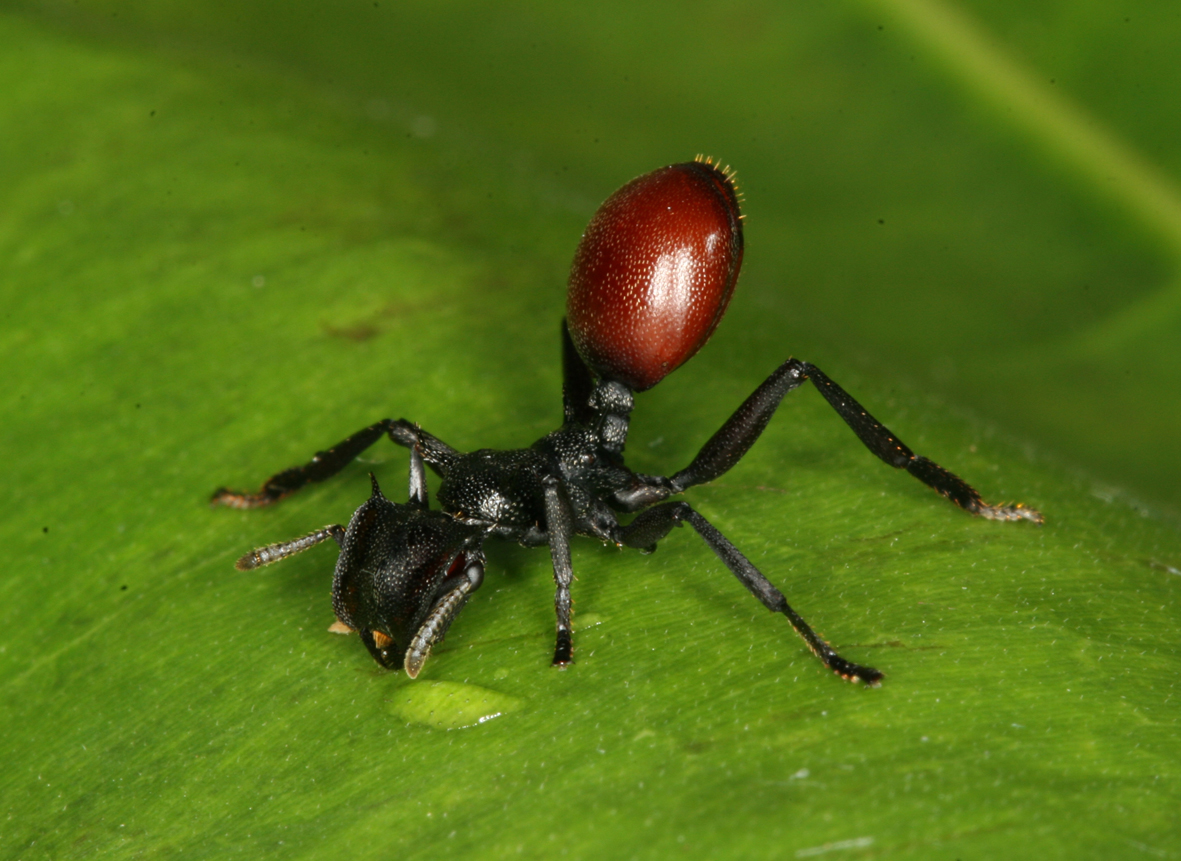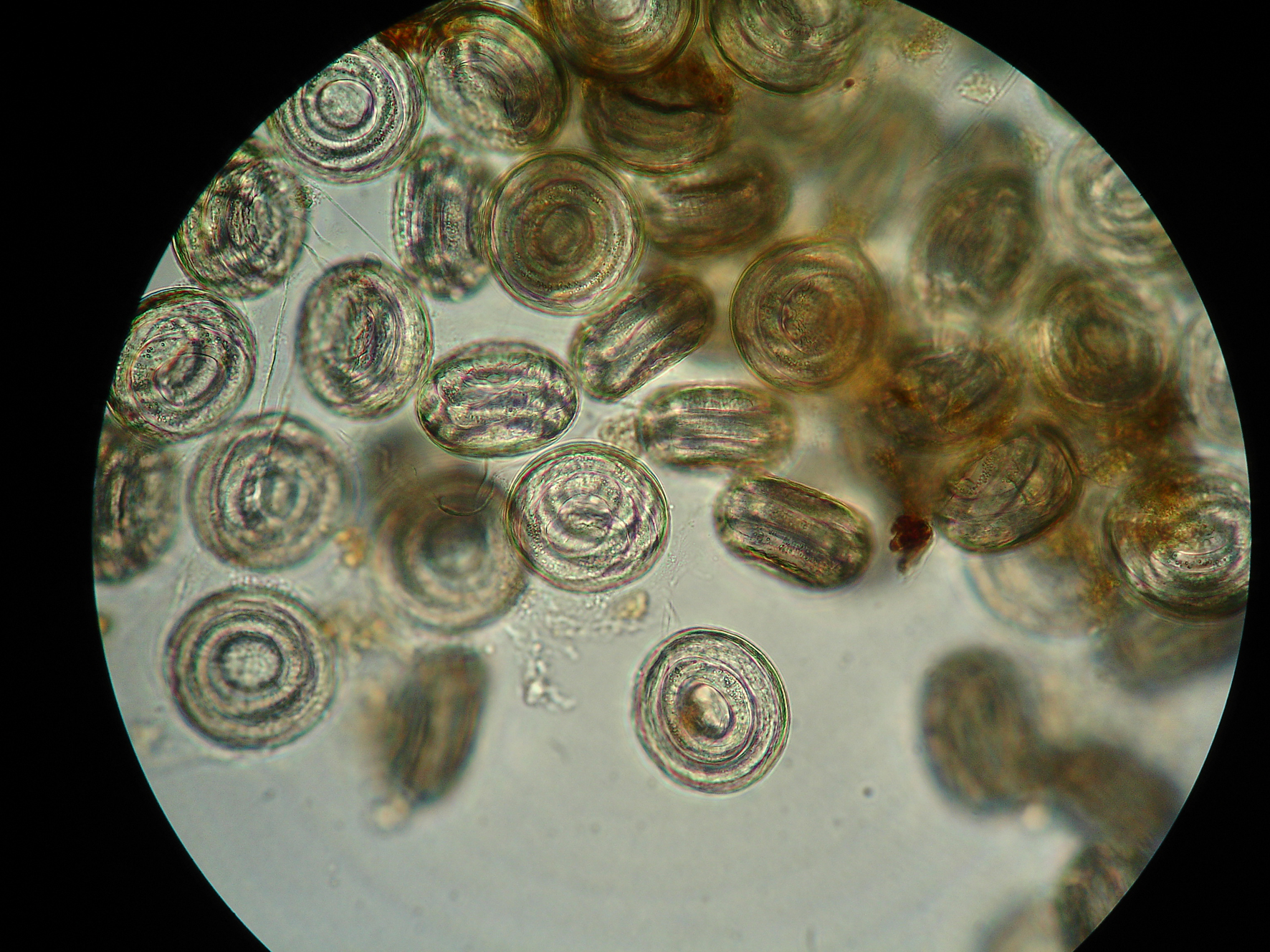Red Ant, Dead Ant...
Interview with
 Helen - Now we're going to return to one we talked about in 2005, about ants that live in trees. This was a story by researcher Steve Yanoviak who talked to us from up high in the canopy of the Amazon rainforest where he discovered a certain species of ant that lives in trees that glide down if they fall and can clamber back up the trunk rather than having to walk across the dangerous floor of the rainforest. Now he's discovered that the same ants can also make themselves look like pieces of fruit. But not by choice, what's making them do that is a type of parasite. Steve, thanks so much for coming on the show to talk to us. What are these parasites?
Helen - Now we're going to return to one we talked about in 2005, about ants that live in trees. This was a story by researcher Steve Yanoviak who talked to us from up high in the canopy of the Amazon rainforest where he discovered a certain species of ant that lives in trees that glide down if they fall and can clamber back up the trunk rather than having to walk across the dangerous floor of the rainforest. Now he's discovered that the same ants can also make themselves look like pieces of fruit. But not by choice, what's making them do that is a type of parasite. Steve, thanks so much for coming on the show to talk to us. What are these parasites?
Steve - The parasite is called Myrmeconema neotropicum and it is a nematode parasite that infects these ants and causes their gaster or their rear end to turn bright red.
Helen - Why are they doing that? When you first saw this, what did you think?
Steve - Well, actually my colleague Robert Dudley was the first person to notice it and my other colleague, Mike Kaspari and I who worked on ants also, kind of thought that Robert probably didn't really know what he was seeing and was probably a different species of ant. Then we got it into the lab an opened it up and out poured these nematode eggs. Looking at the ant, and the way it behaved, the natural assumption was that it's somehow attracting or trying to attract another animal to transport those eggs to a new colony. The bird would be the most logical scenario.
Chris - How does the red colour get achieved?
Steve - It's actually not a pigment or something that's secreted by the nematode itself. It is, as far as we can tell, a thinning of the exoskeleton of the ant. Also possibly, the nematode is sequestering pigment compounds from the exoskeleton of the ant. Probably a combination of those two.
 Chris - You've very kindly sent us some incredibly striking pictures. There's a nice black ant which is the healthy one and the one which is not healthy, crammed with parasites, has got a big, bright red rear end. It looks like a berry.
Chris - You've very kindly sent us some incredibly striking pictures. There's a nice black ant which is the healthy one and the one which is not healthy, crammed with parasites, has got a big, bright red rear end. It looks like a berry.
Steve - Exactly. By removing the pigment from the exoskeleton what's left behind is this amber colour. That combined with the yellowish eggs inside and a little bit of sunlight makes it appear bright red like you see there.
Helen - So why are the nematodes doing this? What are they trying to get the ants to do for them?
Steve - Well, it a mechanism for transmitting themselves. At least we hypothesise this is the case, to new ant colonies. If the nematodes were to just infect one colony and live out their entire life there without being transported to a different colony then they would essentially just go extinct. The most plausible explanation, the most parsimonious explanation for what we have here is that this is a mechanism for getting those nematode eggs to new ant colonies.
Chris - In other words, a bird would come along and eat that and by mistaking it for a piece of fruit it would normally find in the colony. How would the parasite then complete the lifecycle in getting to more ants?
 Steve - On of the neat things about this story and one of the reasons that it seems to fit well with the ant is that ants collect bird faeces very frequently. That provides a very easy mechanism for the parasite to get in to a new ant colony.
Steve - On of the neat things about this story and one of the reasons that it seems to fit well with the ant is that ants collect bird faeces very frequently. That provides a very easy mechanism for the parasite to get in to a new ant colony.
Chris - Why does it want to do that, it doesn't sound like a very nice job - the ant equivalent of a sewage worker?
Steve - Well, in the tropical forest mineral nutrients can be very scarce and so a lot of things collect bird faeces. In this case the ants are often going after solid parts of the bird faeces and so there's probably a lot of nutrient value in that in terms of undigested insect parts.
Chris - We've heard of previous examples of parasites which have been able to make one animal appear to be another animal. There's a famous example of a snail where it get infected with a parasite that makes one of its antennae look like a caterpillar so a bird will eat it. I've not heard of any previous examples of an animal being made to look like a piece of fruit.
Steve - This is the only example that we know of, at least for the insects. That kind of has to restrict it. There's a parasite that affects a plant that can make the plant look like something that it's not but this is the only example that we know of fruit mimicry in an arthropod. That's sort of a neat story.









Comments
Add a comment